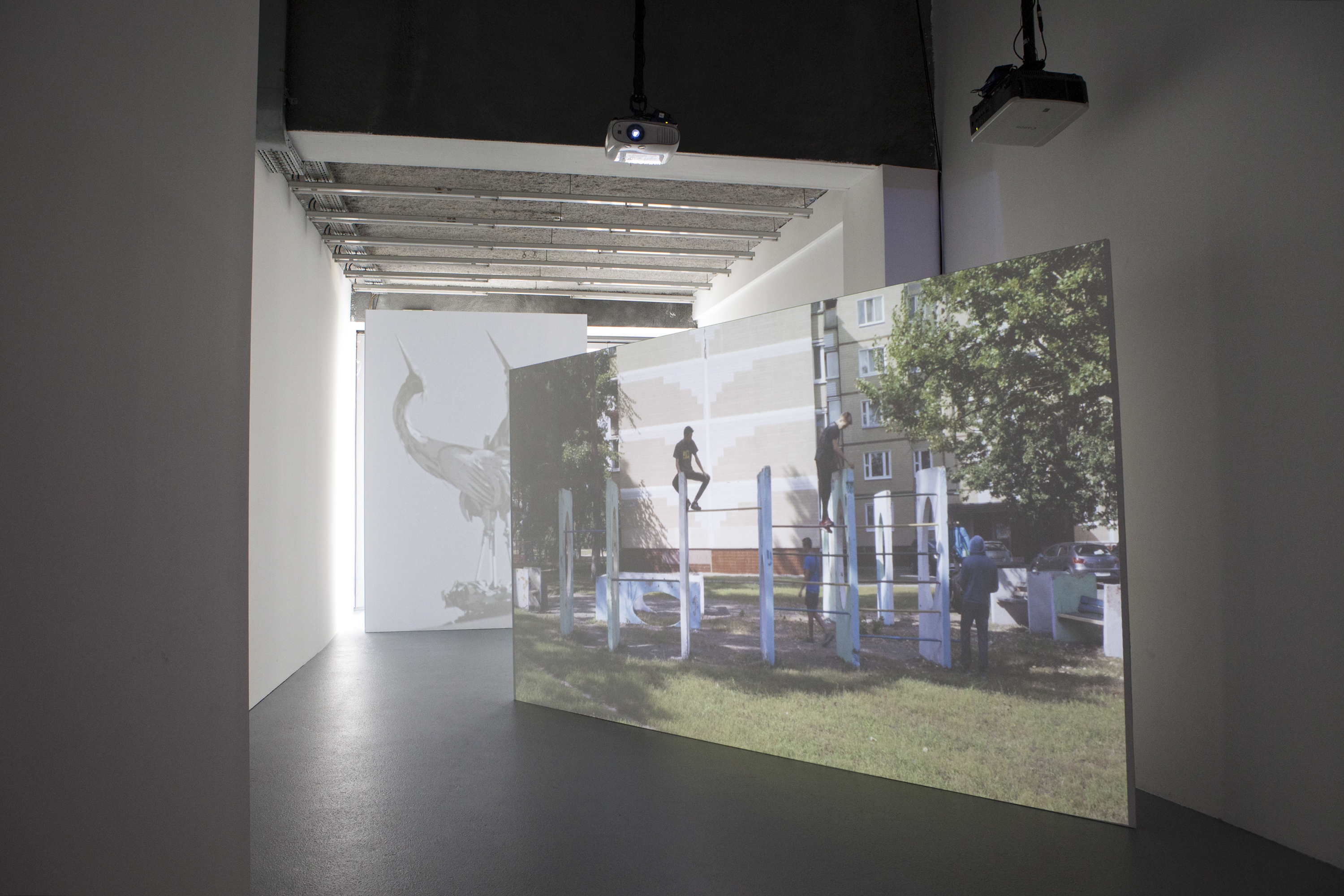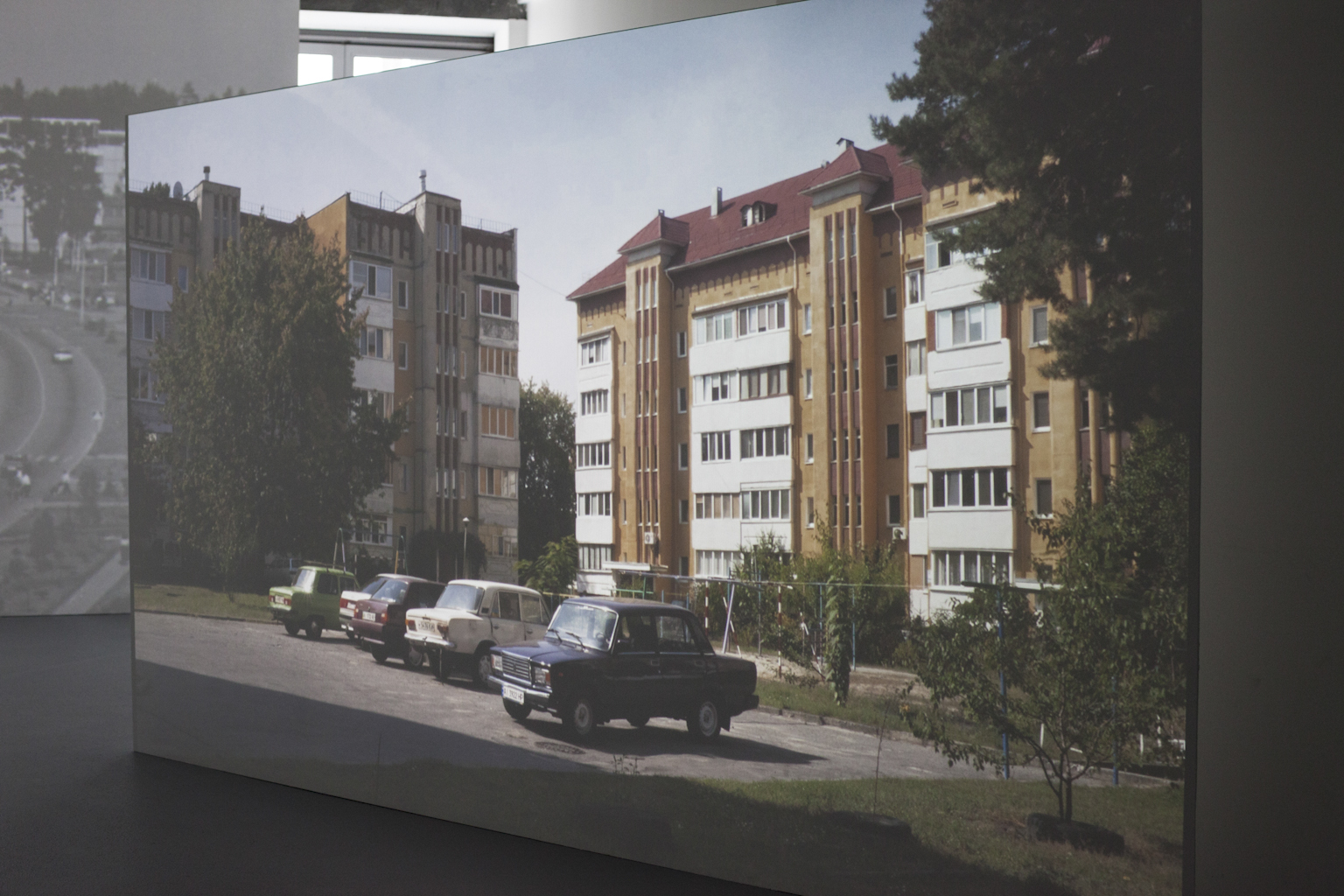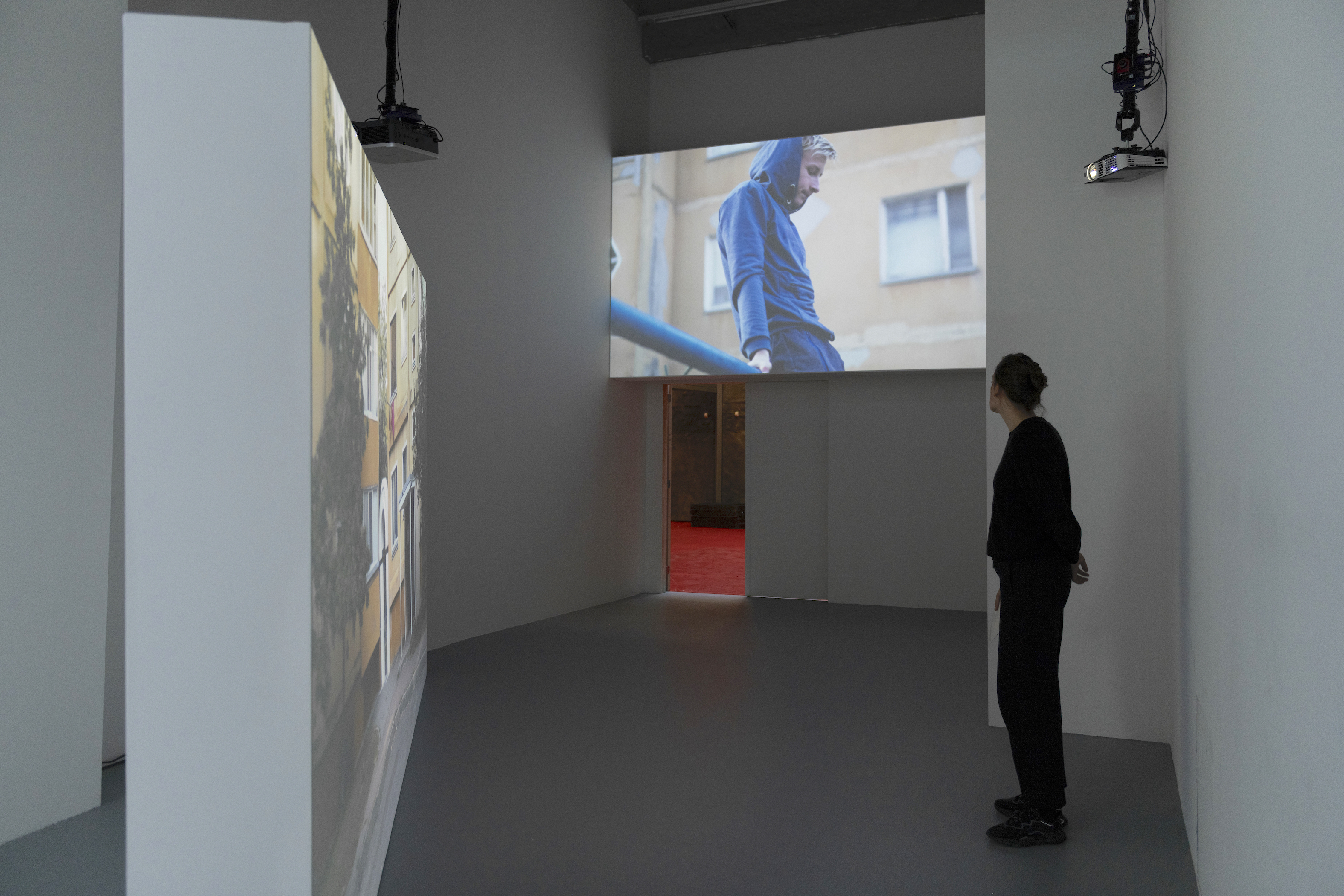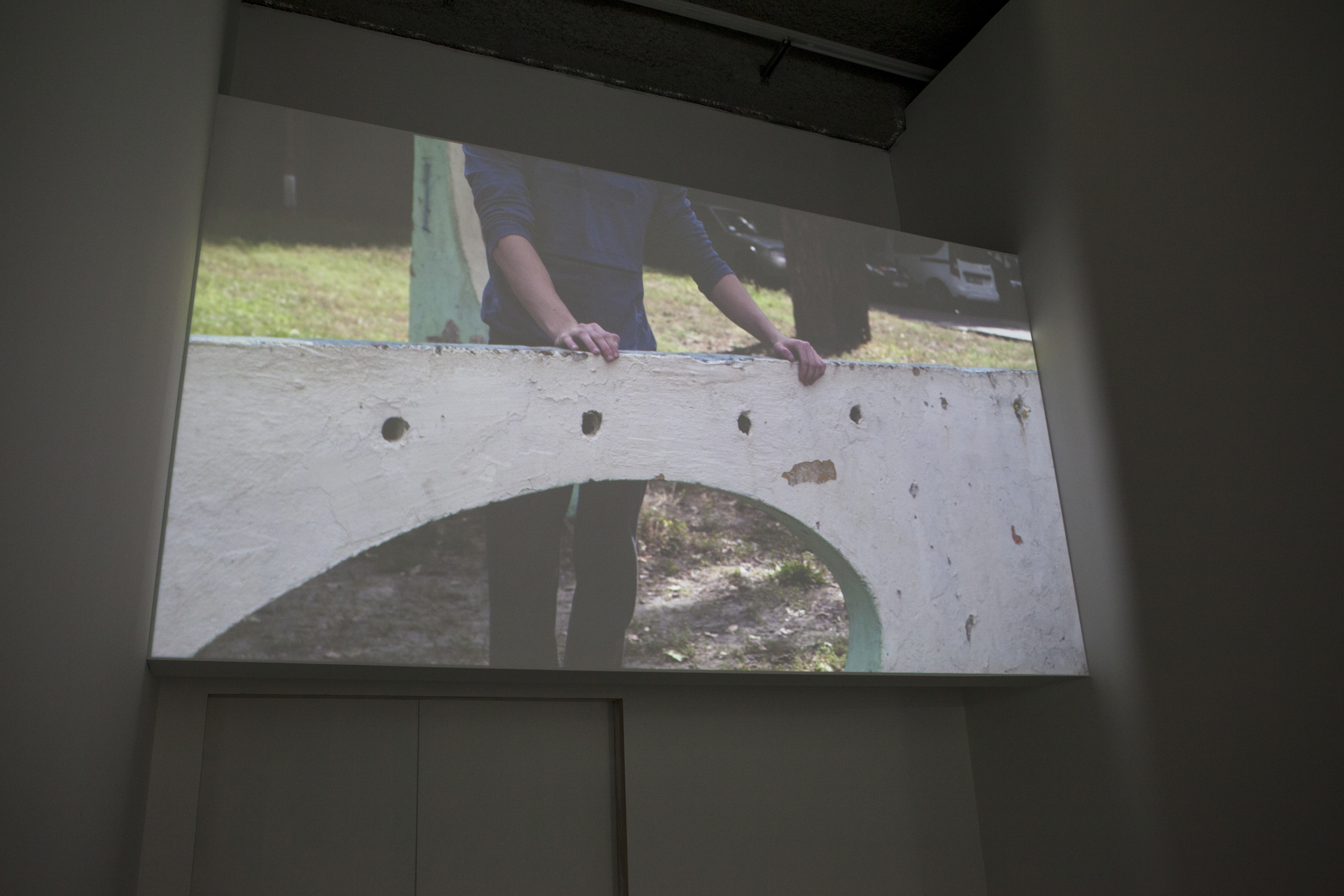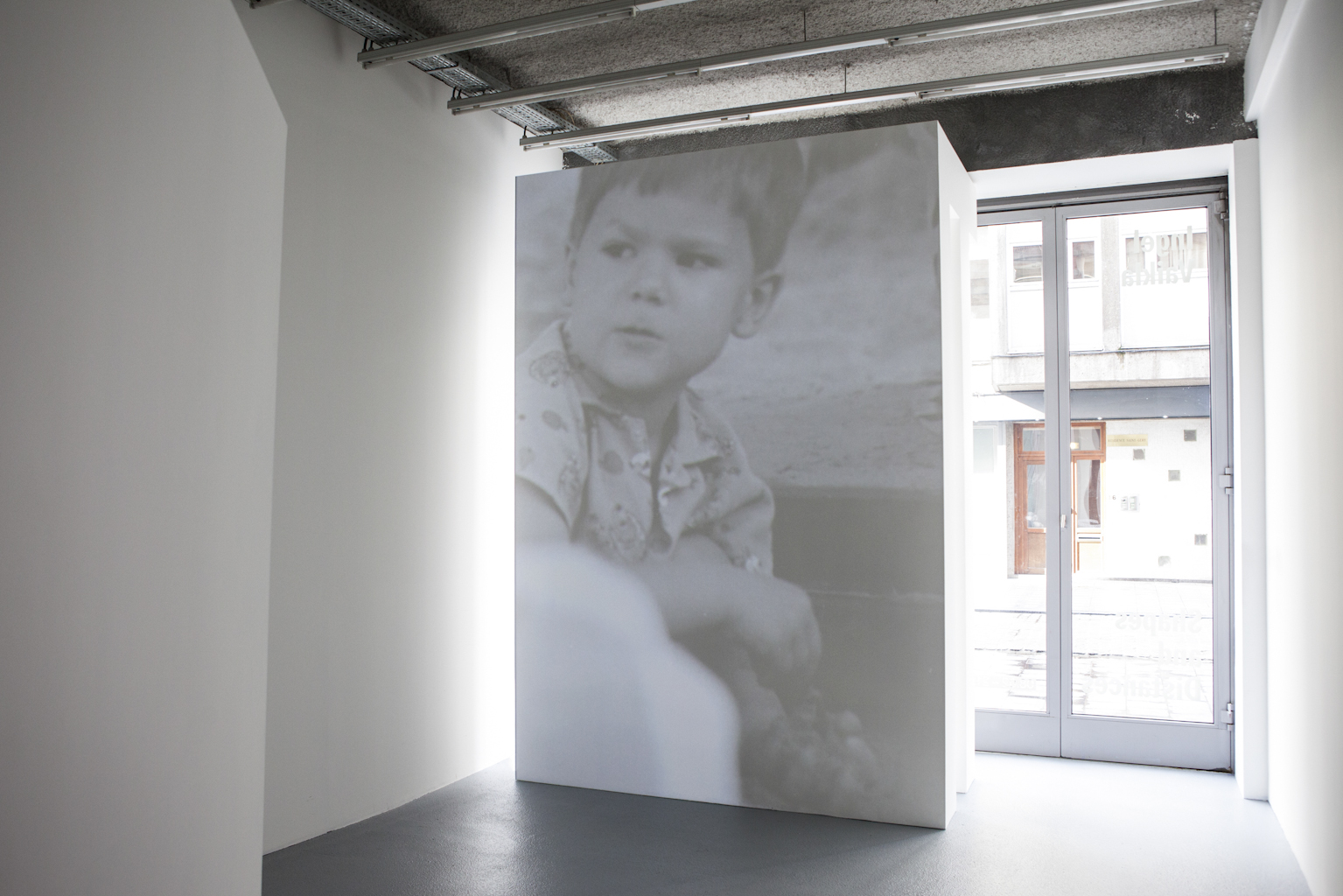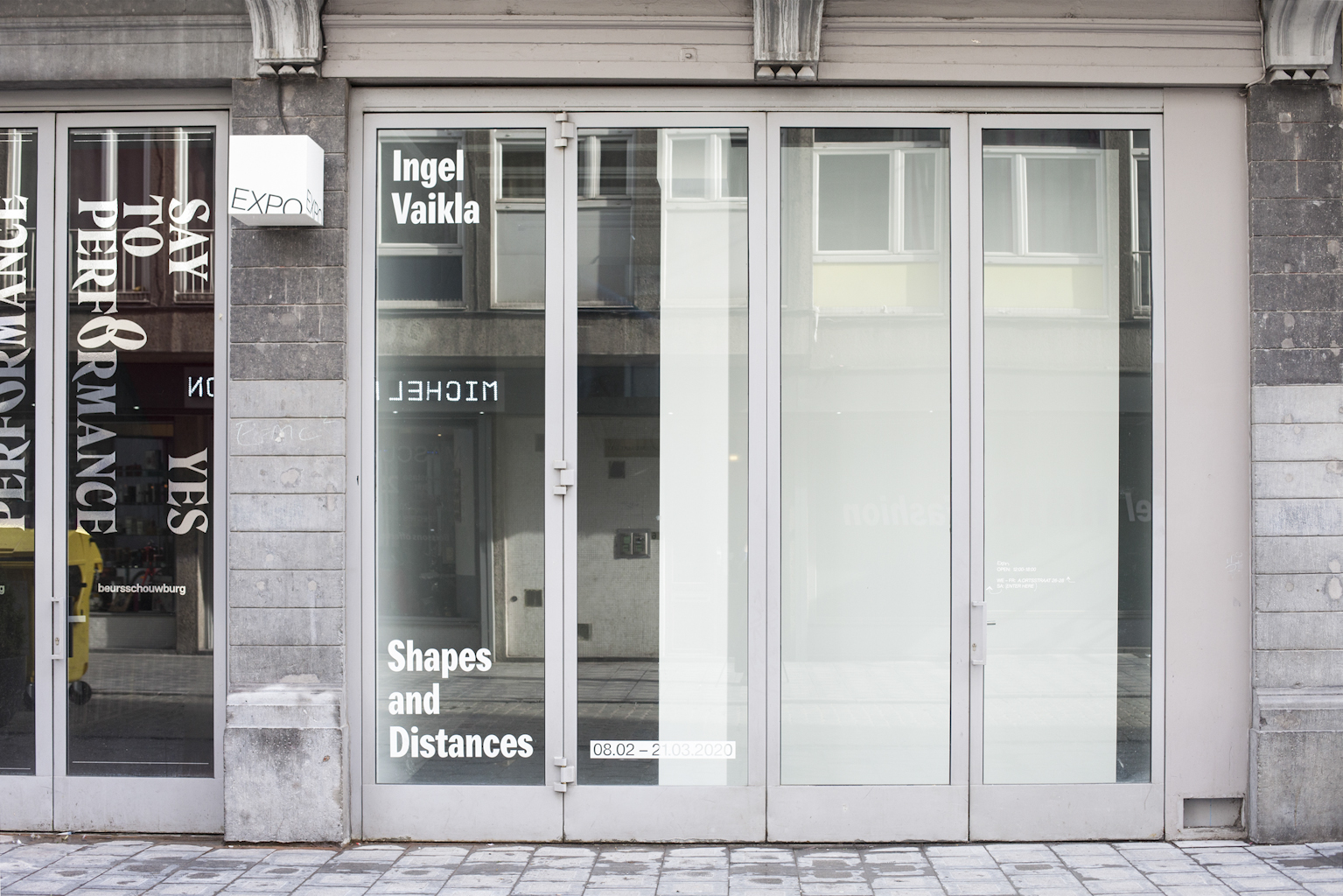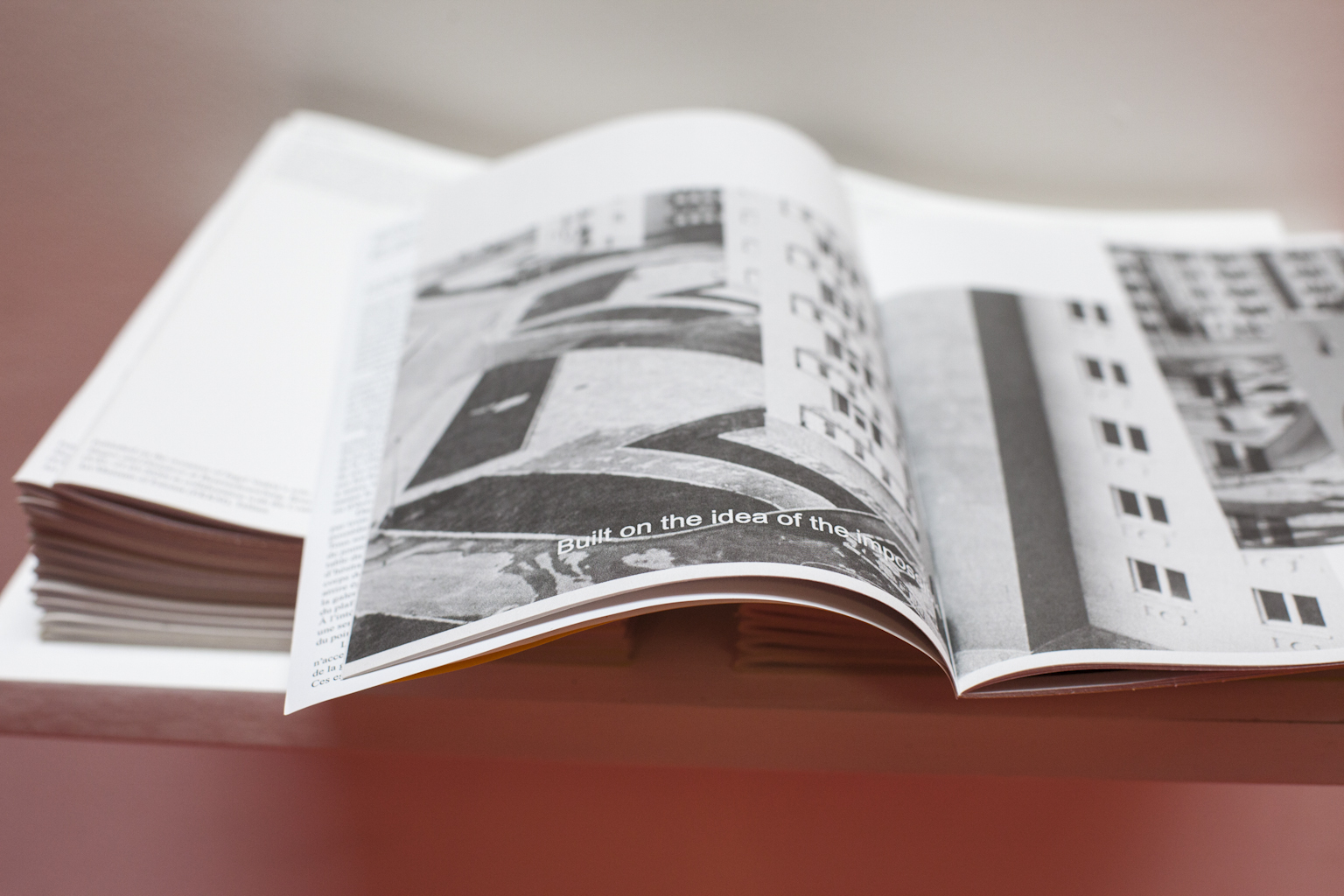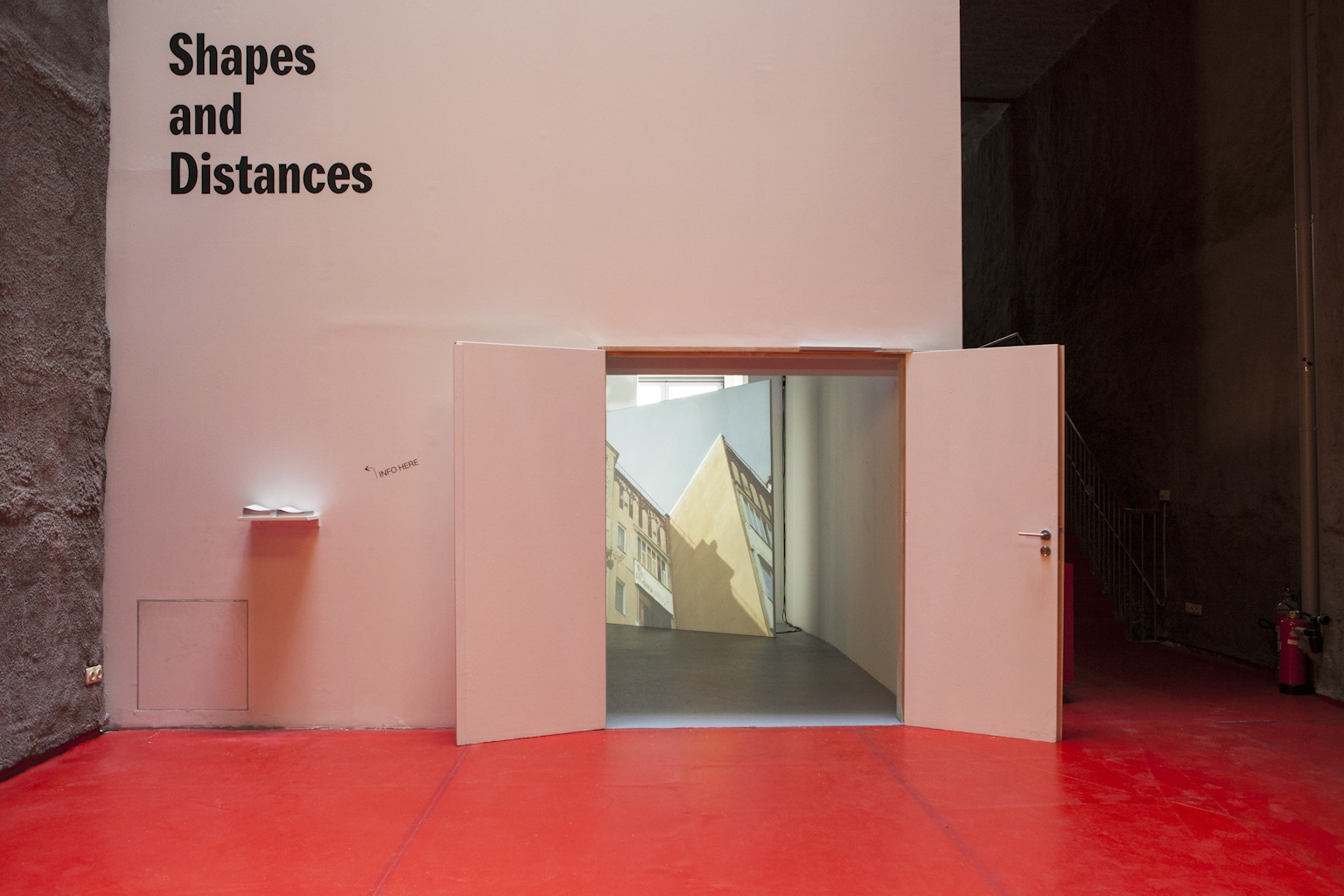Solo exhibition SHAPES AND DISTANCES at Beursschouwburg, Brussels
- Ingel Vaikla
SHAPES AND DISTANCES Ingel Vaikla
8.02.–21.03.2020 in Beursschouwburg, Bruxelles
Curator: Laura Toots
Scenography: Gauthier Oushoorn
Videos featuring: Pasha Kozachenko, Roman Grabovskiy, Bogdan Grabovskiy and Yaroslav Fedchenko
Camera: Margarita Gasanova
Sound design: Simonluca Laitempergher
Colour grading: Lennert De Taeye
Archive material by Yevgeniy Abdulaevich, from Museum of City Slavutych and Central State CinePhotoPhono Archives of Ukraine named after H. Pshenychnyi; quotes by Svetlana Boym
A PLACE OF ARRIVAL
Laura Toots
A city with multiple origins is eagerly welcoming both new inhabitants and guests with open arms; it’s a place of arrival. The concept of the city of Slavutych in northern Ukraine can be seen as a model of the exemplary and friendly everyday of Soviet life. Made with the help of architects and workers from eight former Soviet republics, Slavutych also comprises eight unique districts, each named after the capitals of the contributing republics. Home away from home, perhaps. Distant, yet recognisable as if to console us with the familiar and excite us with the unknown.
Vaikla conceptualises the material of Shapes and Distances through the idea of double exposure – overlapping both past and future as well as being home and abroad simultaneously. She made the superimposition of different eras, memories and viewpoints possible by addressing her own culture of origin and weaving that into a combination of archival material and new footage depicting the city of Slavutych.
Filled with playful forms, colours and styles shaded by the plentiful greenery, Slavutych is accessible and colourful – a vast playground for its teenage residents. The adolescent character of both the city, being only three decades old, and its daring inhabitants invites the audience to balance oneself on the barriers between time and space, and every now and then, having mustered enough courage, to make the jump or climb across experiences, places, eras and screens.
In the exhibition space we are welcomed by three independent spatial volumes, met one by one, each of different shape, height, and placement. All uniformly dressed in pro jections, gleaming with youthfulness. Although the struc tures have comfortably found their place in the room, they also evoke a certain hesitancy in the viewer wondering if their over-sized bodies really belong here. This uncertainty also calls attention to the surrounding gallery space – the slope of the floor, the drop in the ceiling and openings at both ends of the room. Inside, the tranquil volumes have created both a narrowing and a widening sensation, depend ing on the visitor’s point of view.
The placement of the volumes in the corners does not only emphasise the size and limits of the gallery space but also creates even more secluded nooks. These areas in the shadows, seemingly unused, are occupied by avoidance, provided the occasional company by the visitor’s hasty glance. Devoid of the attention of others, but tense with diligence and routine, the daily life of the depicted characters reminds us of the modesty of the other people Vaikla has focused on in her films. Individuals whose stories are beautifully narrated by fragile memories and questions about identity. Vaikla asks how the subjective and collective identities form as well as materialise (on film, in politics, in architecture).
The artistic freedom to navigate between all these dimensions, to position herself in the necessary details allows Vaikla to be so much in the moment that she is also present, steadily, in herself. This poise allows the viewer to be carried by the artist’s gaze, with the same care and intimacy given to the stories entrusted to her. I see Vaikla’s generosity reflecting in the gesticulation and strong presence of the hands in Shapes and Distances. They seem to be straightforwardly seeking our attention (for what has been built and achieved) and offering to embrace us as firmly. They assist in conquering the obstacles (both physical and imaginary) and cling to the uncertain future. The hand that understands, balances and translates emotions and experiences. The hand whose grip is disarming yet uncomplicated.
This publication you are holding stems from the curiosity of creating a repository, entrusted with the ideas and motifs integral to the discussions held during the preparation pro cess. The heart of the publication is a visual archive, also seen in the exhibition space, layered here with text by the artist. A specific stillness has been assembled from balance, focus and repetition to accompany the immersive sceno graphy of the exhibition made by artist Gauthier Oushoorn. On the back covers you’ll find a text by guest writer Alicja Melzacka – an insightful and intimate journey in Vaikla’s work. And all of this masterfully crafted together by graphic designers Jaan Evart and Ott Kagovere
